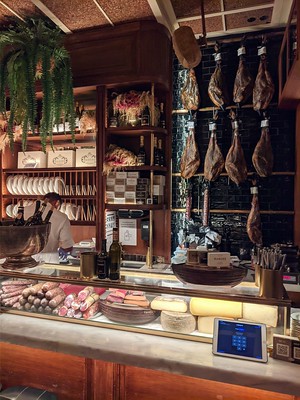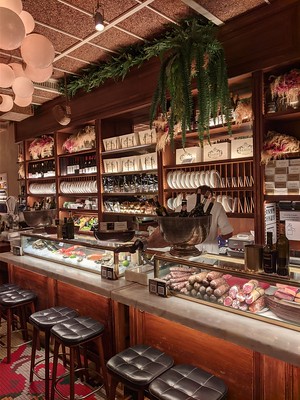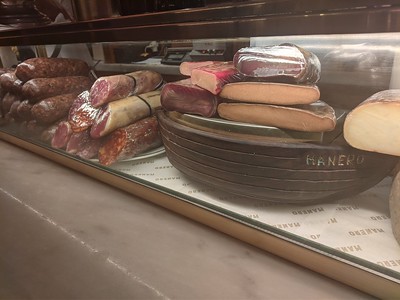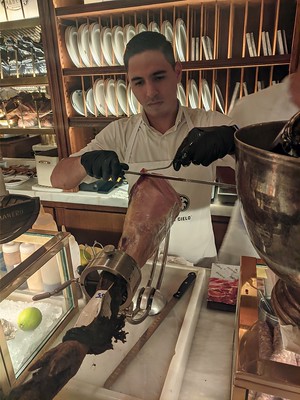The ham arrived today. I prefer the Pallares to the knife that came with the ham, although both are adequate, and I can probably throw away the cheaper knife that came with the serrano. I am surprised how soft this ham is, especially compared to the Serrano also bought at Costco. In some ways, this makes slicing a bigger challenge, as I don't necessarily want to cut as thin as possible. I am also appreciating the length of these knives, as short sawing motions like the videos give a ragged piece of meat and longer stokes look (but don't taste) better. The ham is just under 17lbs, absolutely delicious, but unlike prosciutto. This is dark red, very rich and flavorful with almost a touch of sour note. Prosciutto is much more subtle. Thinking of how expensive these are, I can't help compare it to Japanese Wagyu and feel I got a better deal - 1 lbs of Jamon for $30 is a lot of Jamon and even 1 ounce per day is a lot. I overestimated the size of my fridge, so right now, this is in my pantry. I am hoping as the ham gets smaller and I move shelves around, I can fix that. Overall, I am very happy with this purchase, although I was a little disappointed to see the label say sugar was used in the curing process, which as far as I know, is not tradition. Still, this is less than half of what I'd pay for an Iberico Bellota on Tienda, and a stand was included. The stand is pine, and smells of pine sap, but the hardware is high quality. After this ham is gone, I might keep the stand hardware and upgrade the wood to maple, oak or walnut.



















